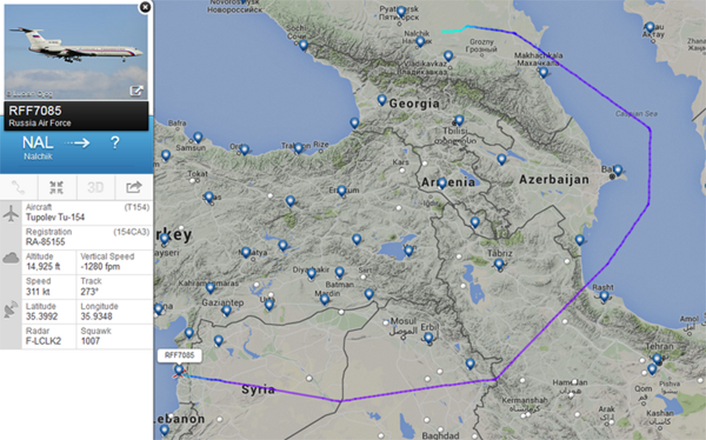The Russian military build up continues as six Su-34 Fullback attack planes arrive in Syria.
Six Sukhoi Su-34 aircraft have eventually arrived at Latakia to join the Russian contingent already there.
Images allegedly shot around the al-Assad International Airport clearly show one Russian Fullback about to land at the airbase in western Syria where 28 Russian aircraft have arrived last week.
@ain92ru @pfc_joker @oryxspioenkop They arrived! pic.twitter.com/JCi4bIT4F5
— LuftwaffeAS (@LuftwaffeAS) 28 Settembre 2015
One of the photos taken from the ground shows the six aircraft trailing what seems to be an airliner over Idlib: the larger plane is probably a Russian Air Force Tu-154.
Said to be an airliner/transporter accompanied with 6 fighters crossing over Hama country side pic.twitter.com/cPbjVZssyi — LuftwaffeAS (@LuftwaffeAS) 28 Settembre 2015
Interestingly, a Russian Air Force Tu-154 using callsign RFF7085 could be tracked online on Flightradar24 during its flight to Latakia on Sept. 28, likely exposing the route followed by the six Su-34s trailing their accompanying Tu-154.
As the below image shows, the aircraft flew in international airspace over the Caspian Sea, to Iran and entered Syrian airspace after flying over northern Iraq: did the Su-34s have all the required diplomatic clearances to fly north of Baghdad or did they simply “sneak” into Syria by hiding under the cover of the transport plane?
Hard to say.
Last week, US officials said that the first 28 Russian combat planes hid under the radar signature on the larger transport aircraft, in an attempt to avoid detection but there are chances that the flights had all the required clearances from the Iraqi Air Traffic Control agencies and were conducted as a standard long-range ferry flight: one tanker/airlifter, using radio and transponder, supporting multiple fast jets.
H/T to @LuftwaffeAS and @obretix. Image credit: Flightradar24.com.
















